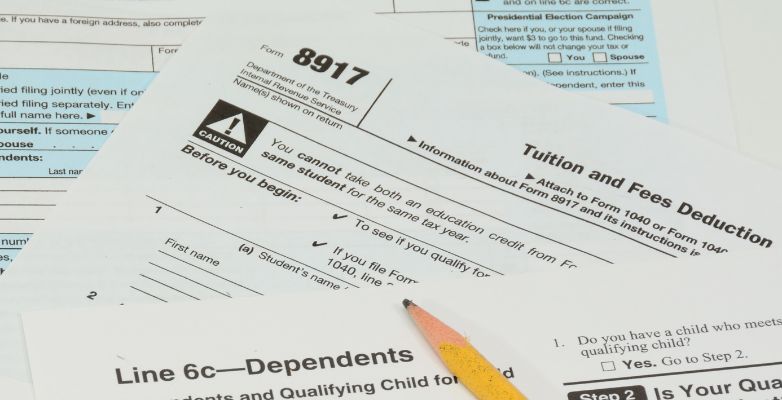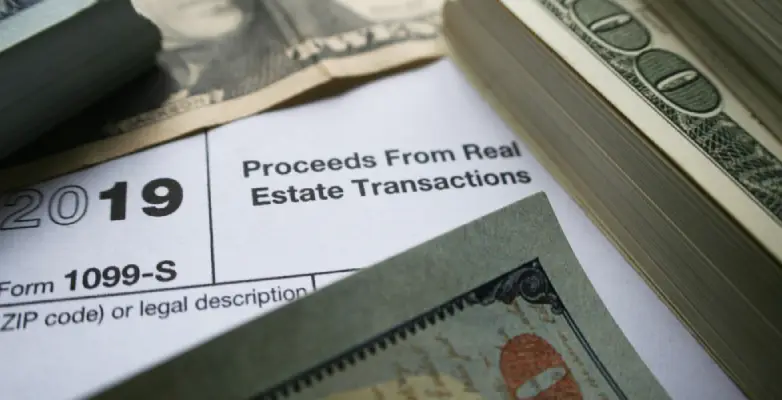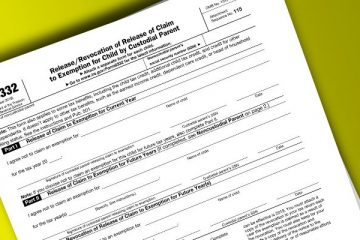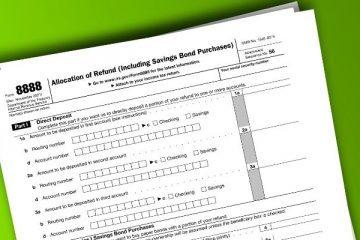The ever-increasing cost of higher education is a concern for many. If you’re not solely relying on loans or grants and are personally funding your tuition and fees, there’s potential for a tax deduction using IRS Form 8917. Consider consulting a financial advisor for optimized tax strategies related to your educational goals.
What exactly is Form 8917, you ask? Well, it’s the paperwork you need to fill out with the IRS if you want to claim a tax deduction known as the “tuition and fees deduction.” Now, this deduction is available for qualified tuition and fees paid in the years 2018, 2019, and 2020. But here’s the kicker: you can’t claim it for expenses paid after 2020 unless they decide to extend it again.
So, what expenses are we talking about here? Qualified educational expenses, my friend. These are the amounts you forked over to your friendly neighborhood higher education institution. But wait, there’s more! Prepaid amounts count too, if they were paid in the tax year for academic periods that kick off in the first three months of the following year. Now, here’s the catch – amounts paid in a previous or future tax year don’t count for the deduction in the year of the academic period.
But what’s included in these expenses, you wonder? Well, the required fees are part of the deal. That means things like books, supplies, and equipment, but only if you had to cough up the cash as part of enrolling in a qualified program. Even those non-academic fees, like student activity fees or athletic fees, get the green light if they were mandatory as part of the enrollment deal.
It’s an IRS tax form that you’ll tag along with your Form 1040, and it’s your ticket to claim the tuition and fees deduction. But here’s the fine print – if you’ve already used Form 8863 to snag educational tax credits, you can’t double-dip and claim those same expenses for a tax deduction on Form 8917.
Table of Content
- 1 Purpose of The Form 8917
- 2 Where to Report the Tuition and Fees Deduction?
- 3 Expenses That Qualify for Deduction
- 4 Who Qualifies for Form 8917?
- 5 How to Fill out Form 8917?
- 6 Conclusion
- 7 Frequently Asked Questions
- 7.1 Who’s eligible for the Tuition and Fees Deduction using Form 8917?
- 7.2 What expenses can I deduct with Form 8917?
- 7.3 Can I use Form 8917 if my filing status is married filing separately?
- 7.4 What if I’m claimed as a dependent on someone else’s tax return?
- 7.5 Is there an income limit for using Form 8917?
- 7.6 Can I claim both a tax deduction using Form 8917 and an education tax credit using Form 8863 for the same educational expenses?
Purpose of The Form 8917
The purpose of Form 8917 is to help individuals calculate and claim deductions for their tuition and fees expenses. This deduction applies to expenses paid in the years 2018, 2019, and 2020, and potentially in future years if the deduction program continues.
To claim this deduction, you’ll need to consider adjusted qualified education expenses paid to an eligible postsecondary educational institution. If you’re unsure whether to use this deduction or explore other education-related tax credits like the American Opportunity Credit or lifetime learning credit, Form 8863 and Pub. 970 provide additional information on these alternatives.
Example
Meet John, a 30-year-old software engineer who decided to pursue a master’s degree in computer science at a local university during the 2020 tax year. His in-state tuition and fees for the year amounted to $9,500.
In addition to tuition, John spent $1,200 on course materials and textbooks. His annual salary as a software engineer is $65,000, comfortably below the IRS Form 8917 adjusted gross income (AGI) limit for eligibility.
Given his income and educational expenses, John qualifies for the Tuition and Fees Deduction. When he files IRS Form 8917 for the 2020 tax year, he can include the $9,500 tuition and fees on the form. John’s maximum deduction under this scenario will be $4,000.
Where to Report the Tuition and Fees Deduction?
To report the deductions for tuition costs and fees, taxpayers used Schedule 1 of Form 1040. Form 8917 was employed to provide the details and calculate the deduction.
Important Note: Starting from the 2021 tax year, you cannot claim the tuition and fees deduction because it was not extended beyond 2020. Therefore, for tax year 2021 and onwards, this deduction is no longer available.
These adjustments to income were particularly beneficial because they didn’t require itemizing, which became less common after the Tax Cuts and Jobs Act (TCJA) nearly doubled the standard deduction.
You could claim tuition and fees deductions and either itemize your taxes or take the standard deduction. Adjustments to income play a crucial role in determining your adjusted gross income (AGI), which is significant because many other tax benefits and your overall tax bracket depend on your AGI. As your AGI increases, some tax advantages may be phased out or eliminated.
Expenses That Qualify for Deduction
In simple terms, qualified education expenses are the costs you pay during the current tax year for tuition and mandatory fees to attend an eligible educational institution. These fees encompass not just the actual tuition but also expenses like books, supplies, and required equipment if the institution insists on these for enrollment. The payment method doesn’t matter; you can use cash, checks, credit or debit cards, or even borrowed funds to cover these expenses.
However, it’s essential to note that qualified education expenses extend to non-academic fees like student activity fees or athletic fees only if these fees are obligatory for enrollment or attendance. Expenses for personal matters such as room and board, insurance, medical costs (including student health fees), transportation, and other personal, living, or family expenditures are not considered qualified education expenses.
Moreover, expenses related to courses or educational activities involving sports, games, hobbies, or non-credit courses can only be counted if they are part of the student’s degree program or contribute to improving job skills. Lastly, if you’ve already claimed these expenses for deduction elsewhere, like on Schedule A (Form 1040 or 1040-SR) or Schedule C (Form 1040 or 1040-SR), they can’t be double-dipped for deduction on Form 8917.
Who Qualifies for Form 8917?
Form 8917 is open to individuals, their spouses, or dependents claimed on their tax returns who were enrolled in a qualified higher education institution during the relevant tax year. “Qualified” signifies that the institution must be a recognized institute of higher learning, requiring students to have a high school diploma or GED before enrollment. There are no residency or full-time study prerequisites.
The deductible educational expenses hinge on payments made for academic periods commencing in the prior calendar year or within the first three months of the tax filing year. Academic periods align with terms such as quarters, semesters, or trimesters as defined by qualified educational institutions.
Who Cannot Use Form 8917?
Married individuals filing separately are ineligible, as are those claimed as dependents by someone else, even if that person doesn’t utilize Form 8917. Children claimed as dependents by their parents also cannot use this form, regardless of their parents’ usage. If your modified adjusted gross income (MAGI) exceeds $80,000 (or $160,000 for joint filers), Form 8917 is not applicable. Lastly, if you were a non-resident alien without non-resident alien tax status during any part of the year, Form 8917 cannot be used.
Additionally, you cannot apply for deductions on the same educational expenses used for educational tax credits on Form 8863. While claiming a state education tax credit doesn’t disqualify you from Form 8917’s tuition and fees deduction, claiming a federal education tax credit on Form 8863 does. The IRS prohibits double benefits in this regard.
How to Fill out Form 8917?
Wondering how to navigate the process of completing Form 8917 to claim a tax deduction for your education expenses? Let’s break it down step by step. Before diving in, be sure you meet the eligibility criteria for this form. If you’re using IRS Form 1040, calculate any write-in adjustments for Form 1040, line 36, as you’ll need that figure for Form 8917 if you’re filing with Form 1040.
- Student Information: In line 1, parts a) and b), provide the name(s) and Social Security Number(s) of the student(s) in your household. In part c), enter the adjusted qualified expenses. Calculate this by subtracting tax-free educational assistance from the tuition and fees paid during the relevant period(s). Tax-free educational assistance includes parts of scholarships, employer-provided educational aid, veterans’ assistance, and other excluded educational benefits.
- Total Expenses: Sum up the adjusted qualified expenses for all students and write the total on line 2. Only tuition and fees are eligible for this deduction; other expenses like books and accommodation don’t qualify.
- Income Reference: Line 3 requires you to enter the amount from line 22 of Form 1040 or line 15 of Form 1040A, depending on your chosen income declaration form.
- Calculate Adjusted Income: On line 4, input the total from either Form 1040, lines 23 through 33, plus any write-in adjustments on the dotted line next to Form 1040, line 36, OR Form 1040A, lines 16 through 18.
- Income Comparison: Moving on to line 5, subtract the amount on line 4 from the one on line 3. If this result exceeds $80,000 (or $160,000 for married couples filing jointly), Form 8917 isn’t applicable for your tuition and fees deduction.
- Deduction Calculation: The deduction comes into play on line 6. Determine whether the amount on line 5 is above $65,000 ($130,000 for married couples filing jointly). If it is, enter the smaller figure between line 2 or $2,000. If it isn’t, enter the smaller figure between line 2 or $4,000.
- Maximum Deduction: It’s important to note that the maximum deduction attainable through Form 8917 is $4,000. While it’s a helpful benefit, it might not fully cover higher education costs.
- Transfer Deduction: After correctly filling out Form 8917 and recording your deduction on line 6, transfer this deduction number to either Form 1040, line 34, or Form 1040A, line 19, depending on the form you use (Form 8917 isn’t compatible with Form 1040EZ).
Following these steps ensures you correctly utilize Form 8917 to claim your education expenses deduction, potentially providing some relief from the costs of higher education.
Conclusion
In conclusion, IRS Form 8917, the Tuition and Fees Deduction, provides valuable financial relief for eligible taxpayers covering educational expenses. It’s a useful tool for reducing the overall tax burden, especially for those pursuing higher education or helping dependents with their educational costs. However, understanding the eligibility criteria and navigating the complexities of tax forms can be challenging. If you’re still facing questions or uncertainties regarding Form 8917 or any other tax-related matters, don’t hesitate to contact our team of experts. We’re here to provide guidance, ensure compliance, and maximize your available deductions, making the tax season a little less daunting. Your financial well-being is our priority, and we’re here to assist you every step of the way.
Frequently Asked Questions
Who’s eligible for the Tuition and Fees Deduction using Form 8917?
To qualify for this deduction, you, your spouse, or a dependent claimed on your tax return must have been enrolled in a qualified higher education institution in the tax year. The institution must be considered “qualified,” meaning the student must have a high school diploma or GED before enrolling. There’s no full-time study or residency requirement.
What expenses can I deduct with Form 8917?
You can deduct qualified tuition and required fees for academic periods starting in the tax year or the first three months of the following year. This includes expenses like books, supplies, and equipment if they are mandatory for your enrollment in a qualified program. Non-academic fees, such as student activity or athletic fees, also count if they are required for enrollment.
Can I use Form 8917 if my filing status is married filing separately?
No, unfortunately. If you’re filing as married filing separately, you cannot use Form 8917 to claim this deduction.
What if I’m claimed as a dependent on someone else’s tax return?
If someone else claims you as their dependent, even if they don’t use Form 8917 themselves, you can’t use this form to claim the deduction.
Is there an income limit for using Form 8917?
Yes, there is. If your modified adjusted gross income (MAGI) exceeds $80,000 ($160,000 for married filing jointly), you won’t be able to use Form 8917 to claim the tuition and fees deduction.
Can I claim both a tax deduction using Form 8917 and an education tax credit using Form 8863 for the same educational expenses?
Generally, you can’t have your cake and eat it too. You can’t claim both a federal tax deduction and a federal tax credit for the same educational expenses. So, if you’ve already used Form 8863 for education tax credits, you can’t double-dip and use Form 8917 for the same expenses.




